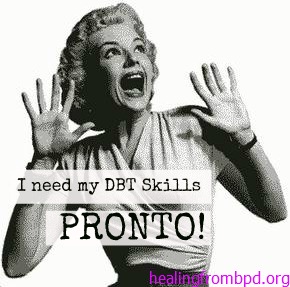Happy Victimization: Emotion Dysregulation in The Context of Instrumental, Proactive Aggression
How the role of attachment, amygdala response and the mirror neuron system play out in aggression types in BPD and Psychopathy
Here is a snip from a very interesting blog post by William Lu, who was a graduate student in psychology when he wrote it in 2010:
I recently read a fascinating book chapter written by William Arsenio titled Happy Victimization: Emotion Dysregulation in The Context of Instrumental, Proactive Aggression. Early in the chapter, the author discussed how according to a study, 4-year-old children tended to predict that a bully would feel happy after pushing around some poor chump on the playground, aka happy victimization (Arsenio & Kramer, 1992). However, at age 6, children who were probed further not only predicted that the bully would feel happy after bullying, but would feel a sense of remorse as well (4-year-olds stuck to their guns). Is this the beginning stages of moral development?
He goes on to explain reactive versus proactive aggression:
1) Reactive aggression = “hot headed” impulsive angry reaction (ex. I’ll punch you in the face because you really pissed me off). 2) Proactive aggression = “cold blooded” aggression used instrumentally to reach some desirable end (ex. I’ll punch you in the face because I want your lunch money).
and develops a theory of BPD vs. Psychopathy when it comes to the roles of the various components:
Borderline personality disorder
1. Prolonged disturbance of personality function in a person characterized by depth and variability of moods.The disorder typically involves unusual levels of instability in mood; black and white thinking, or splitting; chaotic and unstable interpersonal relationships, self-image, identity, and behavior; as well as a disturbance in the individual’s sense of self.
2. over-active amygdala (i.e. overly responsive to emotion-related stimuli) (Donegan et al., 2003)
3. insecure attachment (i.e. history of verbally/physically abusive parent) (Aaronson et al., 2006)
4. ability to empathize (Fertuck et al., 2009) = intact mirror neuron system?Psychopathy
1. An abnormal lack of empathy combined with strongly amoral conduct, masked by an ability to appear outwardly normal. They can use charisma, manipulation, and intimidation to control others and to satisfy their own need.
2. under-active amygdala (i.e. unresponsive to emotion-related stimuli) (Blair, 2008)
3. insecure attachment (i.e. history of verbally/physically abusive parent) (Saltaris, 2002)
4. inability to empathize = dysfunctional mirror neuron system? (Fekteau et al., 2008)My speculative model in sum:
Borderline personality disorder = insecure attachment + overactive amygdala response + functional mirror neuron system => high reactive/impulsive aggression
Psychopathy = insecure attachment + underactive amygdala + dysfunctional mirror neuron system => high proactive/unemotional + reactive/impulsive aggression
Psychopaths = happy victimizers into adulthood?
While I have cut up the blog post, the entire blog post is worth reading.


2 Comments
neoninsanity
Amazing! Thanks for posting this. It really got my head thinking in some new directions. And I completely agree with the theory being proposed!
Pingback: